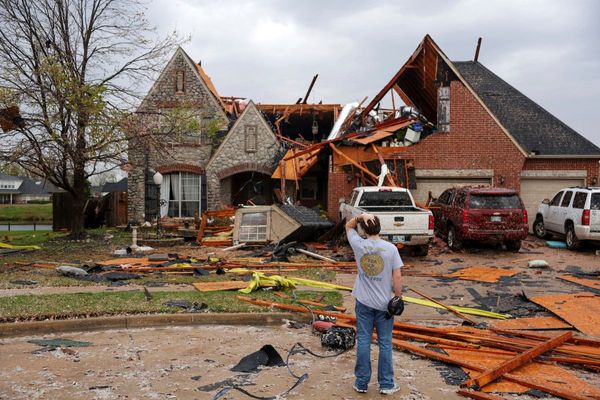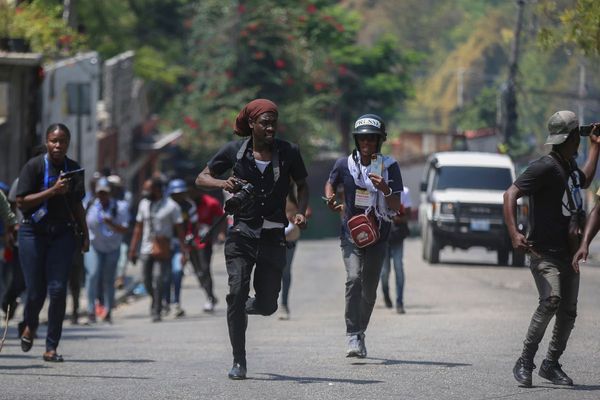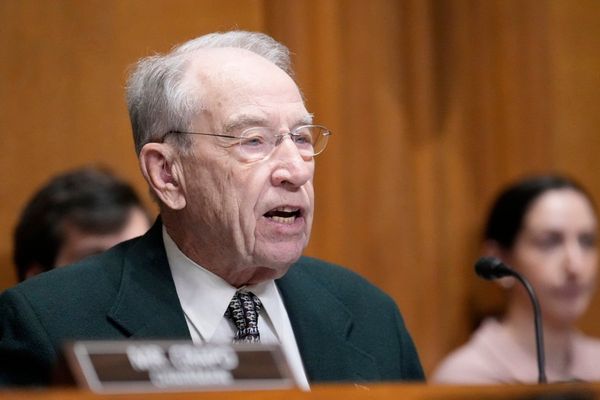
A little more than a year ago, River Streader swapped a Coburg sharehouse for one in Kangaroo Point – returning to their hometown of Brisbane after a decade in Melbourne.
The 30-year-old spent their time in Melbourne working as psychotherapist, tattoo artist and punk musician, while previously voting Greens, independent and “Labor-ish”.
Now Streader is among a pandemic-era wave of interstate migrants arriving in Queensland in numbers not seen in almost two decades.
In 2020, more than 30,000 Australians moved to Queensland, largely from Victoria and New South Wales, according to the Australian Bureau of Statistics.
In the 12 months to last September, ABS data shows Queensland’s population growing by almost 57,800 people, accounting for 84% of regional growth. This is in a period that Victoria’s population fell by more than 32,700 people.
Like Streader, most moved to the state’s populated south-east, an area home to the majority of its most contested federal seats.
And their arrival precedes a federal election that the University of Queensland’s Chris Salisbury believes will see “a correction” back towards Labor after the party’s “dire” performance in Queensland in 2019, when the state swung heavily to the LNP.
Though it “won’t go down well” in regional areas where there are seats to watch – Flynn, Leichhardt, Herbert and Capricornia among them – the political historian says the change would be felt mostly “in and around the capital”, Brisbane.
“That’s really where Labor’s gravity pulls in Queensland, federally at least,” Salisbury tells the Guardian.
So how will an influx of tens of thousands of new and returned Queenslanders play into that expected correction – and which seats might they impact?
In an attempt to answer that question, Griffith University’s policy innovation hub director, Susan Harris Rimmer, says her researchers are turning their minds back to 1993, the year almost 50,000 Australians moved to Queensland after Jeff Kennett took the axe to Victoria’s public service.
“Victorians were moving to Queensland for lifestyle reasons, but they brought their politics with them,” Rimmer says.
She says those politics revolved around a “stronger and more nuanced rights discourse”.
“Victoria is more socially progressive generally,” Rimmer says. “Issues around multiculturalism, ethnicity, First Nations issues … [and] policing issues are different from up here.”
They’re subjects that interest Streader, who listed police accountability, challenging racist and sexist norms and the climate emergency as the issues upon affecting the way they vote.
“I care about some sort of action happening, away from just the middle Liberal-Labor hodgepodge,” Streader says.
“Last time, I remember voting for people expanding the safe injecting room, so sometimes it’s things like that.
“Housing will be a big one at the moment.”
Streader will cast their ballot later this year in the seat of Griffith. Labor’s Terri Butler retained the seat with a margin of less than 3% in 2019.

That was a win for which Butler could thank the preferences of Greens voters.
The Labor incumbent polled almost 10,000 fewer primary votes than her LNP opponent, but a 6.67% swing to the Greens saw her retain the seat formerly held by Kevin Rudd. It was the second consecutive swing of more than 6% to the Greens, whose primary vote in Griffith in 2019 was 23.65%.
That trend is part of a long-term demographic change threatening LNP seats in Brisbane’s inner city, Rimmer says. Both the Greens and Labor are understood to be optimistic about their chances in the seat of Brisbane, and the Greens are also eyeing nearby Ryan.
Rimmer says the migration of progressive voters from southern states could play into the growing Greens vote in Ryan – but its 6% margin places the seat only just within the realms of that considered marginal. And not all of Queensland’s new arrivals will bring left-leaning politics with them.
Sally Branson Dalwood and her family uprooted from St Kilda for a new life on the Gold Coast late last year.
She, for one, cannot be relied upon to bolster the Greens vote – she was once state director of the Victorian National party and an adviser to former PM Tony Abbott.
The family left Melbourne after Jonathan Dalwood, 40, felt forced to close his cake manufacturing business just days after the state went into lockdown.
Branson Dalwood runs her own business consultancy and can work from anywhere. After reflecting upon their lives, the family decided to head north.
The entrepreneur says her priorities had changed since becoming a mother to two young boys.
“I feel very strongly about women in entrepreneurship, women in business, equality, equal pay,” she says.
“And I feel really strongly about making sure we are a caring and compassionate society, whilst also having some robust economic policy.”
But Branson Dalwood says others she knows who have left Canberra and Melbourne for the sunshine state also made the move because their “financial wherewithal was riding on having their small business open” and they were sick of “living in fear of lockdown”.
“They are very libertarian,” she says.
Branson Dalwood will cast her vote in the seat of Fadden, held by the employment minister, Stuart Robert, with a healthy margin of 14.2%.
The neighbouring seat of Forde, however, is less secure. The LNP’s Bert Van Manen held it handsomely in 2019 with a swing of almost 8%. Three years earlier, in 2016, Van Manen won the seat by a margin of 0.6% – or just 1,026 votes.
Then there’s the seat of Longman, north of Brisbane, which is one of two electorates won by the LNP from Labor in 2019.
Covering the hinterland area around Woodford, as well as Caboolture and Bribie Island, it is held by Terry Young by a margin of 3.3%, making it the LNP’s most marginal seat in Queensland.
Since 2007 it has swapped hands four times. In 2016, Labor had won it with a margin of 0.8% – or 1,390 votes.
If Salisbury is correct about a return to those kinds of margins, new arrivals like Streader and Branson Dalwood could determine which way the vote swings.
Come polling day, it might just be a Longman or a Brisbane that proves decisive.
Salisbury says only a few of Queensland’s federal seats “generally and historically” changed hands in any given poll – with the exception of “watershed elections” such as in 2007 when the state’s own Kevin Rudd swept to power.
“In Queensland, we really do just stick to the status quo here, and I don’t get the sense that there is a massive mood for change in Queensland yet,” he says.
“If it is a bit more of a correction election, I don’t see a huge number of seats falling.”







